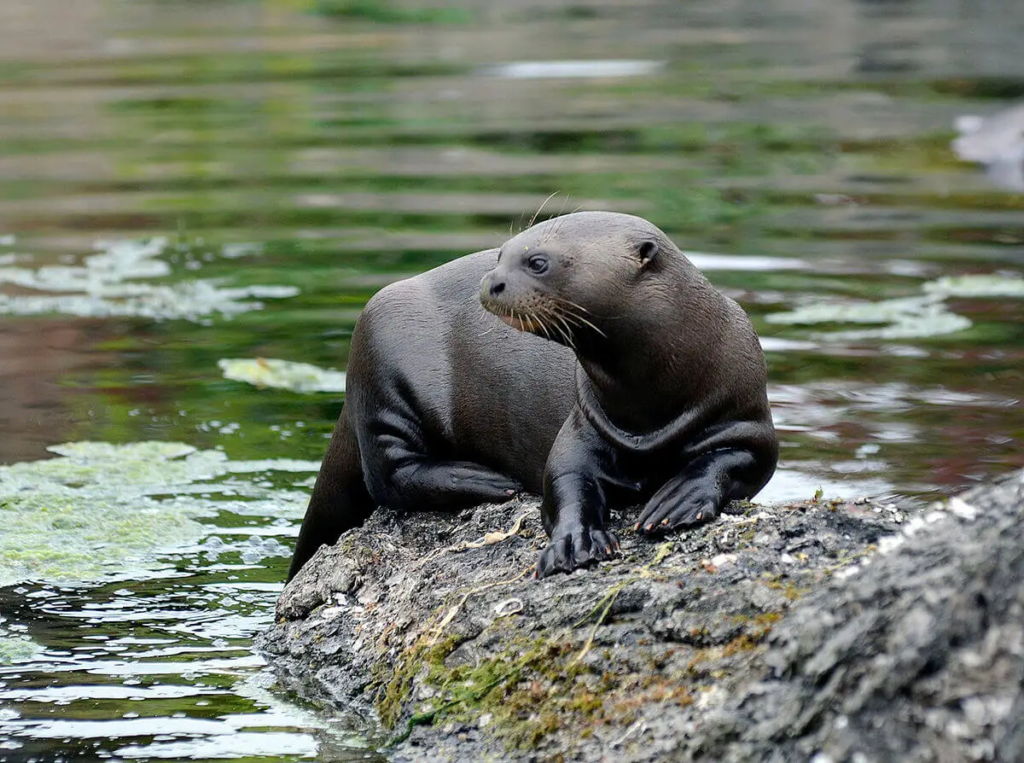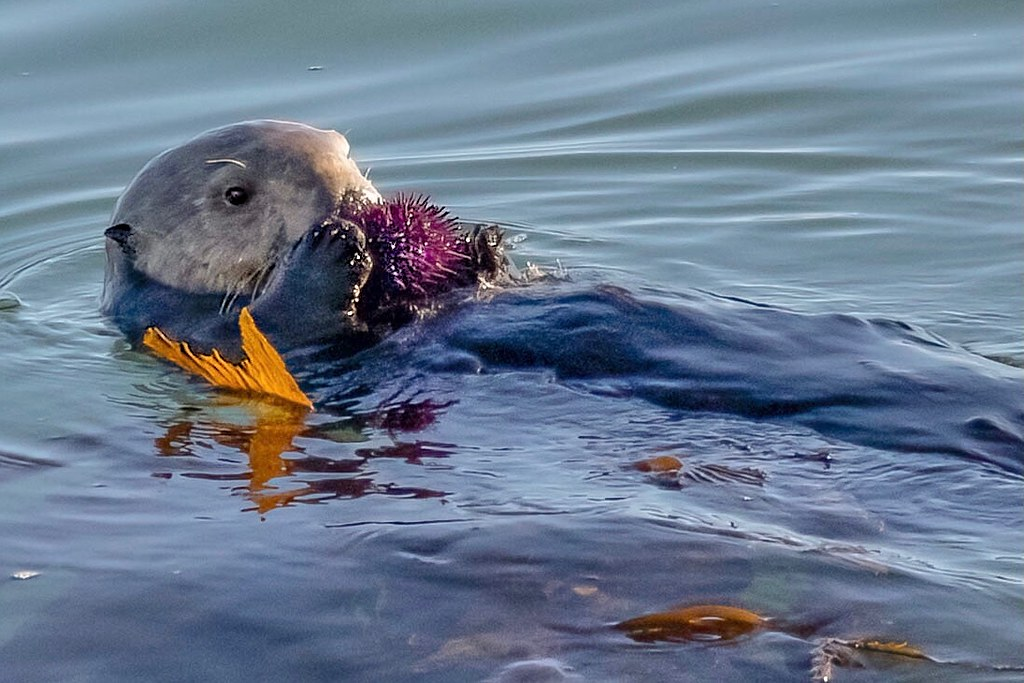1. They Have a Violent Side

Shutterstock
Otters are often associated with playful and endearing behavior, but their actions can sometimes take a much darker turn. They have been observed engaging in violent acts, including attacking other animals—sometimes for no apparent reason other than territorial aggression or stress. In fact, otters can be surprisingly aggressive toward other members of their own species, especially when fighting over food or mates. Males, in particular, are known to engage in brutal battles for dominance or to assert their territory. This unpredictable nature reveals a more disturbing side to their otherwise charming demeanor.
2. They Hunt and Kill for Fun

Animalia
While otters are primarily known for hunting to satisfy their hunger, their behavior sometimes reveals a disturbing predatory instinct. In some instances, otters have been observed killing animals, such as seals, without any apparent intention of consuming them. These acts of senseless violence suggest that otters may hunt for the thrill or simply to assert dominance, rather than just for sustenance. This unnerving behavior demonstrates their complex and sometimes ruthless nature, showing that otters, while often regarded as playful and cute, are capable of exhibiting dangerous and unsettling actions when in their natural, unrestrained state.
3. Otters Are Aggressive Protectors

Flickr
When threatened, otters can quickly shift from their playful demeanor to display fierce territorial aggression. They are highly protective of their space and young, and will not hesitate to use their sharp claws and powerful teeth to drive away any perceived threats. This instinctive aggression is particularly evident when they feel their territory or offspring are at risk. Otters have been known to attack with surprising speed and strength, using their natural weapons to ward off intruders, making them a force to be reckoned with when provoked. This protective behavior underscores the darker side of their personality.
4. They Hold Grudges

Animalia
Otters have a remarkable memory and are capable of recalling encounters with other animals and humans. This means they can hold grudges, sometimes acting aggressively toward individuals they perceive as threats, even after significant time has passed. Whether it’s a previous conflict with another animal or a human who posed a danger to them, otters may display heightened aggression in future interactions. Their ability to remember and react accordingly can make them unpredictable, particularly when they feel threatened or challenged, showing that otters are not just cute and playful, but also capable of harboring deep-seated hostility.
5. Unsettling Vocalizations

Flickr
Otters are capable of making eerie, high-pitched calls and noises, especially when they are distressed or trying to communicate with their group. These vocalizations can sound unsettling and unnerving, especially in the wild or at night when the environment is quiet. Their calls, often described as a combination of whistles and screams, serve to alert other otters to danger or to express discomfort, but they can also be quite haunting to hear. This vocal behavior adds to the mystique of otters, revealing a side of them that can be more eerie than endearing, particularly in moments of distress.
6. They Use Tools to Kill

Flickr
Otters have been observed using tools, such as rocks, to crack open shellfish, showcasing their remarkable intelligence. This behavior is highly advanced for such a small, seemingly harmless animal, and can be unnervingly impressive. The sight of an otter carefully selecting a rock, then using it with precision to break open a shellfish, is a testament to their cognitive abilities. This tool use not only highlights their problem-solving skills but also adds an element of eeriness, as it’s a behavior typically associated with much larger, more predatory animals, making otters seem far more formidable than their playful exterior suggests.
7. Sexual Aggression

Flickr
Male otters are known for their aggressive mating behaviors, which can be disturbing to witness. During mating season, males often exhibit violent tendencies, attacking females and sometimes holding them underwater in an attempt to mate. This forceful behavior can be unsettling, as it contrasts sharply with their otherwise playful image. While these actions are driven by the instinct to reproduce, they highlight a darker, more predatory side to otters. The aggression displayed during mating is not uncommon in the animal kingdom, but it can be shocking given the otter’s typically charming and social reputation.
8. They Have Sharp Teeth

Flickr
Despite their adorable appearance, otters possess razor-sharp teeth that are specifically designed for tearing apart their prey, making them formidable and potentially dangerous animals. These teeth, combined with their strong jaws, allow otters to easily break through tough shells and capture slippery fish. While their playful nature and cute faces might make them seem harmless, their powerful bite is a reminder of their predatory instincts. Otters are well-equipped for survival in the wild, and their teeth, though hidden behind their endearing smiles, add a dangerous edge to their otherwise charming demeanor.
9. Otters Eat Their Prey Alive

PICRYL
Some otters have been observed eating their prey, such as fish and crabs, while it’s still alive, offering a gruesome display of their predatory nature. This behavior highlights the raw and brutal side of otters, as they use their sharp teeth and strong jaws to subdue their catch before consuming it. While it may be a natural part of their feeding habits, witnessing an otter devouring a live animal can be unsettling. It’s a stark reminder that, despite their playful behavior, otters are skilled predators with instincts that can be both ruthless and fascinating.
10. Infanticide Is Common

Shutterstock
In some otter species, males are known to kill the offspring of females that aren’t their own. This disturbing behavior is typically a strategy to ensure that the mother’s next litter will be fathered by them. By eliminating the existing pups, the male increases his chances of passing on his genes to the next generation. This ruthless act highlights the darker side of otter behavior, where survival instincts drive them to extreme measures. Though rare, it’s a reminder that even seemingly playful creatures can engage in deeply unsettling and violent actions to secure reproductive success.
11. They Carry Disease

Flickr
Otters can carry parasites and diseases that pose a risk to both wildlife and humans. Their feces, in particular, can spread harmful diseases such as toxoplasmosis, which can be dangerous if transmitted. Toxoplasmosis, in particular, can affect various animals, including humans, leading to serious health issues, especially in immunocompromised individuals. As otters inhabit both land and water, they often come into contact with various species, making them potential vectors for the spread of disease. While otters may appear harmless, their role in transmitting parasites adds an unsettling layer to their otherwise charming image.
12. Unpredictable Temperament

StockVault
While otters may appear cute and playful, they can quickly shift from being friendly to aggressive without warning, making them unpredictable and sometimes dangerous animals. Their sudden mood changes, especially when they feel threatened or cornered, can lead to swift, aggressive behavior. Otters have powerful jaws and sharp teeth, which they can use defensively or offensively if provoked. This unpredictable nature makes them difficult to manage in captivity or when interacting with them in the wild, as their playful antics can quickly turn into a defensive or aggressive response.
13. Otters Can Destroy Ecosystems

Pexels
In certain environments, otters have been known to overhunt, causing significant ecological imbalances. Their feeding habits, especially in areas with limited prey, can lead to the decimation of populations of small fish and other aquatic creatures. This overhunting can disrupt local ecosystems, as the decline of one species affects the entire food chain. While otters play a crucial role in maintaining healthy ecosystems, their overconsumption of prey in some areas can be detrimental, highlighting the potential negative impact they can have when their populations grow unchecked or when prey becomes scarce.
14. They Can Be Extremely Territorial

Animalia
Otters will defend their territory with surprising aggression, using their strength, sharp claws, and powerful jaws to chase off anything they perceive as an intruder. Despite their playful appearance, otters can become highly territorial, especially when protecting their den or feeding grounds. They are known to fiercely guard their space from other animals, including other otters, and even humans if they feel threatened. This aggressive territorial behavior can be startling, as otters will not hesitate to attack or display dominance in order to maintain control over their area.
15. They’re Actually Invasive Species

GetArchive
In places where they’re not native, otters can become invasive species, disrupting local ecosystems by preying on native wildlife and competing with other predators. Their presence in non-native areas can lead to the decline of local species, as they often have no natural predators to keep their numbers in check. Otters are opportunistic hunters and may consume large quantities of local fish, amphibians, and other aquatic creatures, putting pressure on already vulnerable species. Additionally, their competition with other predators for resources can create further imbalances, making them a significant ecological threat when introduced to new environments.


